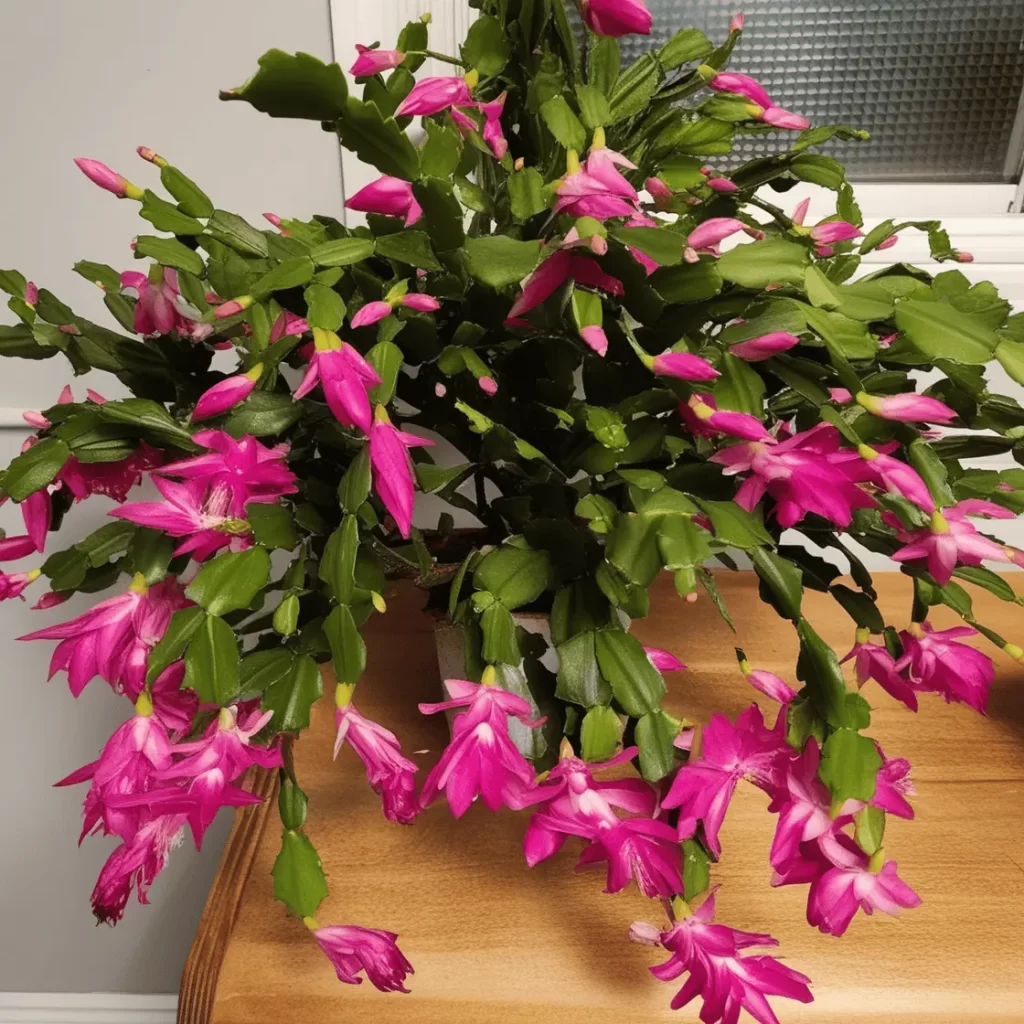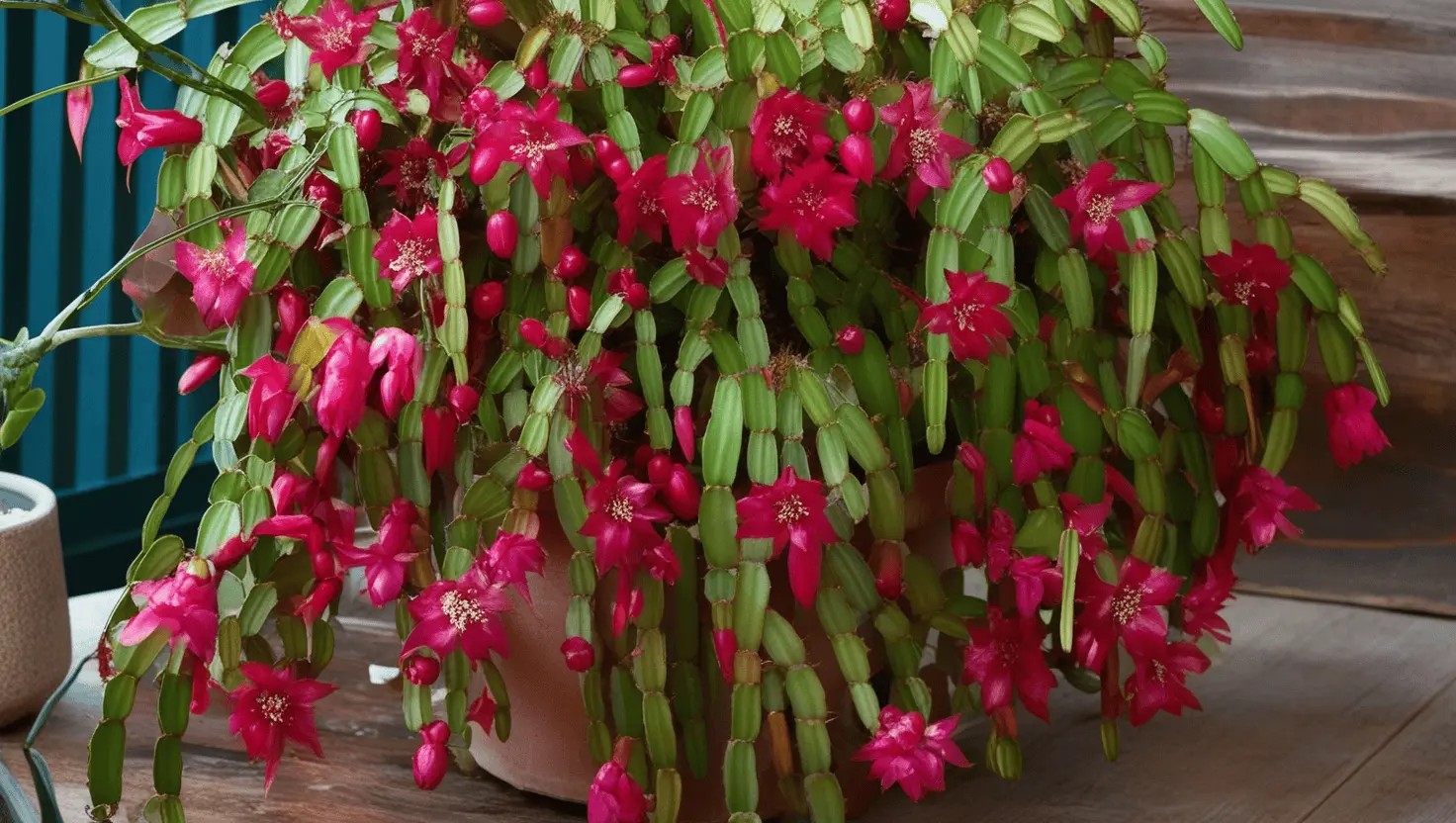The Christmas Cactus is celebrated for its vibrant and colorful flowers that typically bloom during the holiday season. However, achieving those festive blooms can sometimes be tricky, and many people wonder how to encourage their Christmas Cactus to bloom reliably year after year. By providing the right care and creating an optimal environment, you can enjoy the beauty of this tropical plant every holiday season. Here, we’ll guide you through the essential steps to make your Christmas Cactus bloom with stunning success.
1. Understanding the Christmas Cactus Bloom Cycle
Understanding its natural blooming cycle is the first key to getting your Christmas Cactus to bloom. Native to tropical rainforests, the Christmas Cactus doesn’t follow the same light and temperature cues as desert cacti. Instead, it is a short-day plant, meaning it requires a period of darkness and cooler temperatures to trigger blooming.
To encourage blooming, the Christmas Cactus needs about six to eight weeks of darkness and cooler nighttime temperatures. These conditions mimic the shorter days and cooler nights of autumn in its native environment, which signals to the plant that it’s time to form buds.
2. Timing the Blooming Period
To have your Christmas Cactus bloom in time for the holidays, you need to start the process of bud formation by early fall. The plant typically needs 6-8 weeks of preparation before it can bloom. This means you should begin adjusting light exposure and temperature around mid-October to have blooms by December.
During this time, make sure the plant experiences 12-14 hours of complete darkness each night. You can achieve this by placing the plant in a dark room or covering it with a box or opaque material each evening.
3. Light Conditions: The Importance of Darkness
The most critical factor in getting your Christmas Cactus to bloom is controlling its light exposure. As a short-day plant, it requires long periods of uninterrupted darkness to form buds. For about six weeks, the plant should receive 12-14 hours of complete darkness each night.
During the day, the plant should be kept in bright, indirect light. Avoid direct sunlight, which can scorch the leaves and stress the plant. Instead, place the plant near a north or east-facing window where it can receive gentle light without being exposed to harsh rays.
How to Ensure the Right Darkness Conditions:
- Place your plant in a dark room or closet for 12-14 hours each night.
- Cover the plant with a cardboard box or opaque cloth to block out light completely.
- Be consistent—interrupted periods of light will delay or prevent blooming.

4. Temperature: Creating the Right Environment
In addition to darkness, the Christmas Cactus requires cooler nighttime temperatures to initiate blooming. The ideal temperature for bud formation is between 50-55°F (10-13°C). During the day, the plant can tolerate temperatures around 60-70°F (15-21°C), but it’s the cooler nights that help trigger blooming.
Ensure your plant is kept away from sources of heat, such as radiators or heating vents, and avoid placing it near drafty windows, which could shock the plant. Consistent temperature control is key to ensuring the development of healthy buds.
Ideal Temperature Tips:
- Keep nighttime temperatures between 50-55°F (10-13°C).
- During the day, maintain temperatures between 60-70°F (15-21°C).
- Avoid drastic temperature fluctuations.
5. Watering During the Pre-Bloom Period
Watering plays a crucial role in encouraging your Christmas Cactus to bloom. While the plant requires more water during its active growing season (spring and summer), you should reduce watering in the pre-bloom period (fall).
As buds start to form, let the top 1-2 inches of soil dry out between waterings, but never let the soil dry out completely. Water sparingly to prevent root rot but ensure the plant remains slightly moist. Once the buds appear, you can resume regular watering.
Watering Guidelines:
- In the fall, reduce watering to encourage blooming.
- Let the top layer of soil dry out a bit between waterings.
- Increase watering once buds appear but avoid overwatering.
6. Fertilization for Blooming Success
Fertilizing your Christmas Cactus is essential for healthy growth, but timing is everything when it comes to blooming. During the growing season (spring through summer), use a balanced, water-soluble fertilizer every 4-6 weeks to promote leaf and root development.
As fall approaches and you begin preparing the plant for blooming, stop fertilizing. Fertilizer encourages leaf growth, which can divert energy away from bud formation. Resume fertilizing once the blooming period is over to support healthy growth in the following season.
Fertilizer Tips:
- Fertilize during the growing season with a balanced formula (10-10-10 or 20-20-20).
- Stop fertilizing in the fall to encourage blooming.
- After blooming, resume feeding to promote future growth.
7. Handling Bud Drop and Other Challenges
Sometimes, despite your best efforts, the Christmas Cactus may experience bud drop, where buds fall off before blooming. This can happen due to inconsistent light exposure, temperature fluctuations, or overwatering.
To prevent bud drop, make sure to:
- Maintain consistent darkness periods and cool temperatures.
- Avoid moving the plant once buds have formed, as changes in its environment can cause stress.
- Keep the soil moist but not soggy, as both overwatering and underwatering can lead to bud drop.
8. Aftercare for a Blooming Christmas Cactus
Once your Christmas Cactus has bloomed, you can continue to enjoy its beauty for weeks. After the blooming period, it’s essential to give the plant time to rest. Reduce watering slightly and keep it in a bright, indirect light location.
In late winter or early spring, you can resume normal watering and fertilizing. This will help the plant regain its strength and prepare for the next growing season.
Pruning: After the plant has finished blooming, consider pruning it to encourage bushier growth. Simply pinch off the tips of each segment to promote branching and fuller growth.
Repotting: If your plant has outgrown its pot, repotting in the spring is ideal. Select a slightly larger pot and ensure you use a well-draining potting mix.
Conclusion
Encouraging your Christmas Cactus to bloom requires the right combination of light, temperature, and watering conditions. By mimicking its natural environment and following these essential care steps, you can enjoy a stunning display of flowers every holiday season. Be patient, and soon your Christmas Cactus will reward you with vibrant blooms to brighten your home.

